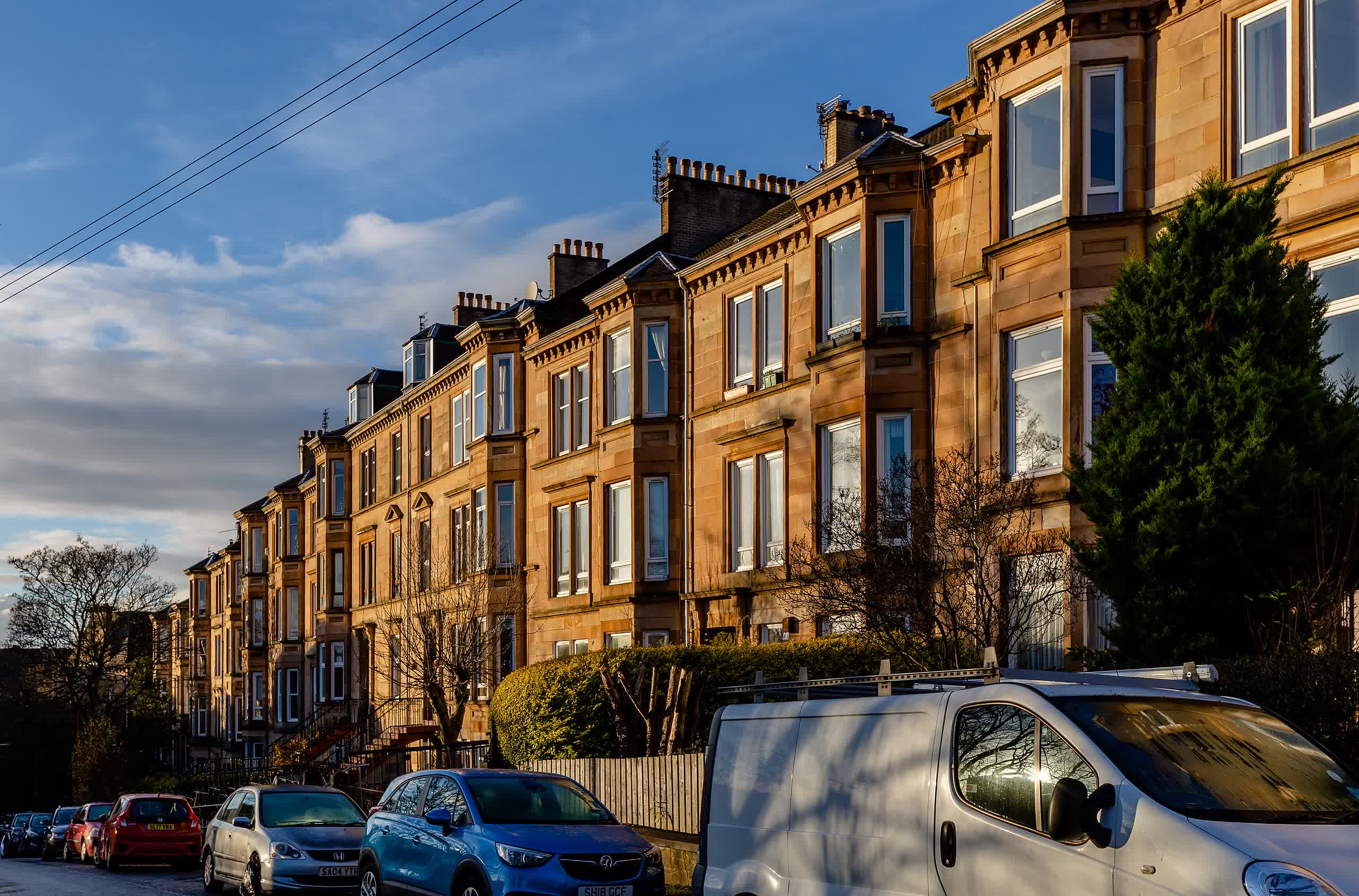Why it matters: Scotland's homes are among the oldest in the world, making them difficult to heat and hindering the country's progress toward its net-zero targets. Its electric wallpaper pilot could have far-reaching implications, not just for Scotland but for countries around the world facing similar challenges in decarbonizing their building stock.
The city of Glasgow, Scotland, is installing electric wallpaper in 12 tenement properties as part of a pilot project to assess the effectiveness of this clean heating source in the country's aging housing stock.
The project, spearheaded by a collaboration among the University of Glasgow, University of Strathclyde, the West of Scotland Housing Association, and Glasgow City Council, comes as Scotland grapples with the challenge of decarbonizing its buildings, which account for a substantial portion of the country's carbon emissions.
Scotland's homes, particularly those in Glasgow, face unique challenges when it comes to energy efficiency. Many of these buildings are among the oldest in the world and suffer from poor insulation. On average, Scottish homes lose heat three times faster than their European counterparts, which means increased energy consumption and higher carbon emissions. Glasgow alone has approximately 70,000 tenement flats.
The electric wallpaper technology uses thin, electrically-powered surfaces that can be easily installed on ceilings. It consists of copper strips combined with graphene or carbon, creating a conductive surface that emits invisible infrared radiation when electricity passes through it. This infrared radiation can warm a room within minutes.
Another advantage of this technology is its potential to improve air quality within homes. By eliminating the need for gas combustion, electric wallpaper could help reduce damp and mold, common issues in older properties. The system's quick response time also makes it particularly suitable for hard-to-heat properties.
To evaluate the electric wallpaper's effectiveness in real-world conditions, researchers are deploying advanced monitoring techniques. These include Internet-of-Things (IoT) sensors and AI-enabled data analytics, which collect information on the system's efficiency, heat retention, and energy consumption.
Tenant feedback is also a component of the pilot study. Initial responses from residents in the trial properties have been overwhelmingly positive, according to Andrew Kubski, Director of Development and Asset Management for West of Scotland Housing Association, which suggests that the electric wallpaper not only meets environmental goals but also satisfies the comfort needs of occupants.
This trial is part of a larger initiative funded by Scotland Beyond Net Zero, a coalition of climate and sustainability experts from Scottish universities. The project is one of eight new research collaborations to accelerate Scotland's transition to net zero emissions. These projects address sustainability challenges in energy, finance, food, the built environment, natural systems, and transport.
